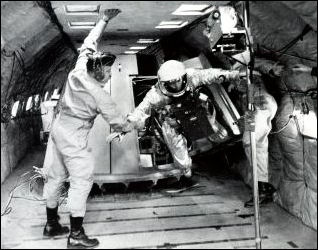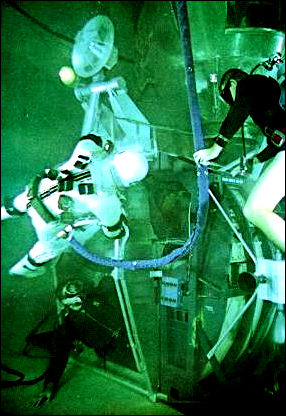
|
| A constant companion to an Astronaut during his training was the graceful twin-engined T-38, a two-seat jet that was fine for aerobatics. T-38's were handy for the incessant travel - to California, New York, the Cape, and way stations - that was called for by the policy of involving astronauts in spacecraft development. And to men who had in the main been expert test pilots, the agile T-38 was both a means of keeping sharp and a resource offering privacy and pleasure. |






